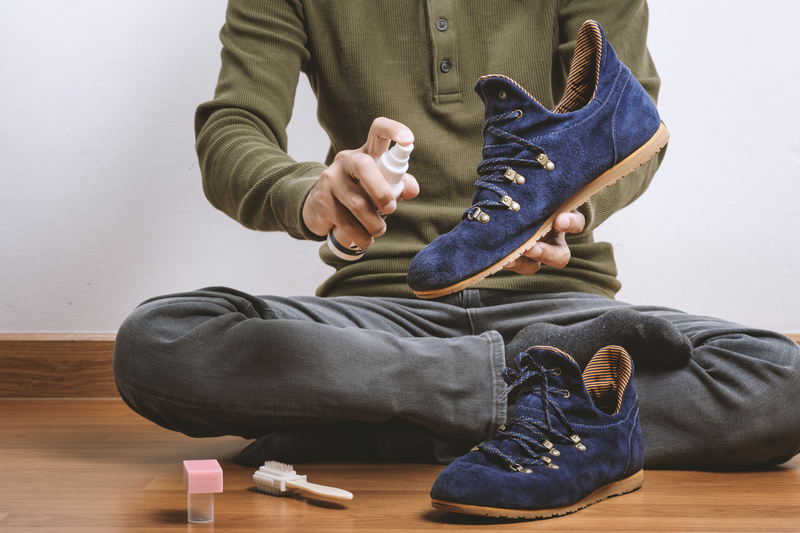Velvet Curtain Care: Safe Cleaning Practices for Stunning Results
Posted on 18/05/2025
Velvet Curtain Care: Safe Cleaning Practices for Stunning Results
Do your velvet curtains look dull or dusty? Maintaining the plush beauty of velvet while keeping it pristine can be a challenge. Velvet curtain care requires special attention, from regular maintenance to deep cleaning. With the right techniques, you can preserve their grandeur and enjoy stunning results for years. In this guide, you'll discover comprehensive, safe cleaning practices tailored specifically for velvet curtains, ensuring they remain an elegant centerpiece in your home.
Understanding the Allure and Nature of Velvet Curtains
Velvet is synonymous with luxury and refinement. Its soft, rich texture and opulent sheen make it a popular choice for drapery, but these same characteristics require careful, informed handling. Before delving into velvet curtain cleaning, let's explore what sets velvet apart:
- Material Origins: Velvet can be crafted from silk, cotton, polyester, or blended fibers. The type of velvet influences both its feel and cleaning method.
- Pile Structure: Unlike flat woven fabrics, velvet's surface has thousands of tiny, erect threads (the pile) that give it its distinct plush appearance.
- Color Depth: The pile's reflective quality results in rich, intense color--but also means marks and dust show up easily.
- Delicate Nature: Velvet is susceptible to pressure marks, crushing, and water spots, emphasizing the need for careful handling during cleaning.

Why Specialized Velvet Curtain Care Matters
Many homeowners make the mistake of treating velvet curtains like any other drapery. However, improper cleaning can result in:
- Permanent wrinkles or creases
- Flattened or matted pile
- Water stains and discoloration
- Loss of the curtain's original luster
Proper velvet curtain care preserves the investment you made in this regal textile and keeps your interiors looking fresh, elegant, and inviting.
Routine Maintenance: Keeping Velvet Curtains Pristine Day-to-Day
The key to retaining the plush appeal of velvet curtains is consistent, gentle maintenance. Here are the essentials:
1. Regular Dusting
- Weekly Dust Removal: Use a soft-bristled brush (specifically for upholstery) or a handheld vacuum with a gentle upholstery attachment. Always brush or vacuum in the direction of the pile to avoid damage.
- Feather Dusters: These can be used for daily surface dusting, but for thoroughness, opt for the vacuum or brush method weekly.
2. Preventing Sun Damage and Pile Crushing
- Rotate Curtains: To prevent uneven sun fading and pressure marks, periodically switch panels or adjust curtain folds.
- Limit Direct Sunlight: Use sheers or blinds behind velvet drapes to diffuse harsh sunlight, protecting color and fibers.
- Keep Furniture Clear: Avoid pressing furniture against your velvet curtains, as this can flatten the pile and cause permanent marks.
Spot Cleaning Velvet Curtains: Tackling Small Stains Safely
Even with the best care, spills and spots can occur. Spot cleaning velvet curtains demands promptness and a delicate touch. Here's how to safely address stains without compromising the fabric:
- Act Quickly: Use a soft, white, absorbent cloth to blot (not rub) the stain immediately. Press gently to absorb as much liquid as possible.
- Use Minimal Water: Water can cause marks on velvet. Moisten a clean cloth with tepid distilled water (avoid tap water, which may cause mineral spots), and gently dab the area--never saturate it.
- Mild Detergent Solution: For tougher spots, mix a tiny amount of gentle, clear dish soap in distilled water. Test on an inconspicuous area first. Dab (don't soak), then blot with a dry cloth.
- Let Air Dry: Allow patched areas to air dry completely, away from direct sunlight and heat sources. If needed, gently brush the pile in the original direction once dry.
Never use harsh chemicals, bleach, or abrasive cleaners on velvet. These can weaken the fibers and cause irreversible color fading or changes in texture.
Machine Washing Velvet: Is It Ever Safe?
A common question in velvet curtain cleaning guides is whether machine washing is safe. The answer: *usually not, unless the manufacturer's tag explicitly allows for it*. For most velvet curtains--especially those made from silk or cotton velvet--machine washing risks:
- Crushing or matting the pile
- Shrinkage or stretching
- Color bleeding or fading
- Irreparable water stains
If your curtains are labeled as machine washable (some polyester velvets are), follow these strict precautions:
- Use a mesh laundry bag to protect the fabric.
- Wash on the gentlest cycle in cold water.
- Always use a mild, color-safe detergent.
- Never overload the machine; wash one panel at a time if possible.
- Skip the spin cycle or use the lowest setting to prevent pile distortion.
Never tumble dry velvet curtains. Hang them to air dry, supporting the fabric's weight to avoid stretching.
When and How to Dry Clean Velvet Curtains
For most types of velvet curtains, professional dry cleaning is the safest deep cleaning method, especially if:
- The care label states "dry clean only."
- There is extensive staining or a musty smell.
- The curtains are too large or unwieldy for safe at-home cleaning.
When choosing a dry cleaner:
- Choose a cleaner experienced with velvet and delicate drapery.
- Bring the entire set to ensure even cleaning and color consistency.
- Request gentle handling and minimal heat exposure to prevent odor absorption and pile flattening.
Steam Cleaning Velvet Curtains: A Gentle At-Home Refresh
Steaming is an excellent way to safely refresh velvet curtains, revive their luster, and remove minor wrinkles or odors without aggressive cleaning. Here's how to do it safely:
- Hang curtains first so they're supported and not bunched or folded.
- Set your handheld fabric steamer to the lowest heat/steam setting.
- Hold the steamer head 5-8 inches away from the curtain at all times--never press it directly onto the fabric.
- Move the steamer slowly in the direction of the pile.
- Allow curtains to air dry completely before touching or moving them.
TIP: Always test on a hidden area before steaming the whole curtain.
How to Remove Pressure Marks and Restore Velvet Curtain Pile
Sometimes, velvet curtain pile restoration is needed due to pressure marks from furniture, tiebacks, or storage.
- Steam: Use a fabric steamer or hover a steam iron a few inches above the mark.
- Gentle Brushing: After steaming, softly brush the area with a soft-bristled velvet brush in the direction of the pile, re-lifting flattened fibers.
- Don't Overwork: Be gentle, as repeated harsh handling can weaken the pile.
This technique can revive most pressure spots, restoring your velvet curtain's plush appearance.
Storing Velvet Curtains: Best Practices
- Clean Before Storage: Remove dust and spot-clean before storing to avoid staining and odor.
- Roll, Don't Fold: Rolling avoids sharp creases and pressure marks that can damage velvet over time.
- Breathe Easy: Store in a breathable cotton or muslin bag, not plastic, to prevent mildew or moisture retention.
- Avoid stacking anything on top of velvet curtains. Store flat or suspended if possible.
Dealing with Specific Velvet Curtain Issues
1. Pet Hair Removal
- Use a lint roller designed for delicate fabrics or a slightly damp rubber glove to gently pick up hair from the surface.
- A handheld vacuum with a velvet-safe brush can make weekly routines even easier.
2. Odors and Freshening Up
- Lightly mist with a fabric-safe odor remover, staying at least 12 inches away and avoiding saturation.
- Regularly airing out the room and ensuring thorough drying after any spot cleaning is essential.
Avoid using strong perfumes or sprays directly on velvet, as these can leave water spots or stain the pile.

FAQs on Velvet Curtain Care
Can all velvet curtains be washed at home?
- No; always check your curtain's care label. Many velvet curtains (especially pure cotton or silk velvet) are "dry clean only."
My velvet curtains are wrinkled after storage. What should I do?
- Hang them and use a low setting on a handheld steamer, being careful not to let water drip onto the fabric.
Can I use a standard vacuum on velvet drapes?
- Only with a soft, upholstery-specific attachment and always in the direction of the pile. Avoid aggressive vacuuming.
How often should I clean velvet curtains?
- Weekly light maintenance (brushing or vacuuming), spot clean as needed, and professional cleaning every 1-2 years or as required.
Conclusion: Achieving Stunning Velvet Curtain Results Safely
Velvet curtains are a striking addition to any decor, but they demand thoughtful, informed care to keep them beautiful.
By following these expert velvet curtain cleaning methods--from routine dusting and spot cleaning to careful steaming and professional dry cleaning--you can preserve their plush elegance and luxurious sheen.
Always refer to manufacturer guidelines, err on the side of gentleness, and contact a specialist when in doubt. With the right velvet curtain care practices, your drapes will remain a rich, inviting focal point in your home for many years.
Have experiences or tips for caring for velvet drapes? Share them below!




